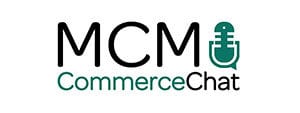Data, data everywhere, and not a drop to use. Ecommerce is swimming in data, but how do you wrangle it into a single source and harness its true power?
In their early stages, businesses consist of one large team where each role interconnects with others. As they grow, roles branch out into various departments and regions where, naturally, employees work in silos. As the company’s organizational structure goes, so goes its data. Isolated and separated.
However, unifying the data (and the teams) could mean the difference between slow growth or skyrocketing sales. It can help bridge information gaps, uncover customer insights, take a real-time pulse of the business, and drive informed decisions. Having a clear and singular perspective of your brand’s key drivers is critical to long-term success.
It’s also the one thing successful ecommerce brands have in common: access to a Single Source of Truth (SSOT).
What is a Single Source of Truth?
In its essence, a SSOT provides a federated view of data; often referred to as the golden record. If you already have a rich customer database, access to sales and financial reports or warehouse management practices, you’re that much closer to achieving a SSOT.
The next step is to combine these reports into a single interface. Depending on your systems, this can be easier said than done, however, the value in doing so is enormous. But more importantly, it establishes a common foundation for your organization’s growth.
That foundation allows everyone to share information seamlessly and without restrictions, get an accurate picture of the health of the business, and everyone make informed choices.
Life Before a Single Source of Truth
Entrepreneurs often bootstrap their operations. They create simple Excel spreadsheets to handle accounting, manage orders, and maintain relationships.
As the company grows, employees start spending more time amending and updating spreadsheets that measure performance and drive strategic decision-making.
Spreadsheets are useful, but mistakes are all too common and can include: update errors, timeliness errors, version control errors, and data transfer errors.
In fact, nearly 9 out of 10 spreadsheets (88%) contain errors. And the majority are caused by well intending people.
Spreadsheets are also poorly suited to manage disparate, sizeable, and interconnected data produced by many eCommerce businesses.
The next logical step would be to explore software that offers automation and integration. What many people overlook is that integration is a form of automation. By searching for solutions that offer both, you’re solving for efficiency and saving time, costs and resources. Additionally, you’re putting your team on the path towards designing and building that SSOT.
Combined, these elements create efficiencies and shift the focus of your team to more high-value tasks.
How to Create a Single Source of Truth (The Plan)
Remember that a SSOT offers more than simply a golden record of your data. Through creating it, you’re taking the opportunity to think critically about how your business runs; how information moves between different systems; and whether those systems are truly fit for purpose.
Now’s the perfect time to ask yourself:
- What are your business goals for the next year? Five years? Ten years?
- What are each team’s priorities (within logistics, sales, marketing & accounting)?
- Who has been advocating for change or optimization in your processes?
- If you could rebuild your systems from scratch, what would you change to drive efficiencies?
Your answers will provide a framework to move forward.
Have a purpose. As companies grow, many lose sight of their mission and go far onto the deep end of analytical technicalities, but not enough on tangible business objectives.
Set priorities straight. Each team or department will have their own set of goals. But make sure they are mission-critical and align with your overall business goals.
Identify your change agents and empower them. Their main tasks revolve around discovery: defining and documenting current processes, practices, and learning about current problems and pitfalls. Empower your change agents by providing leadership buy-in from all relevant stakeholders and department leaders; also, inform employees how it will involve and affect them (for the better).
Designate a small team to vet and implement the right SSoT. This team will be tasked with (1) analyzing feedback from the change agents, (2) studying all software, systems, and tools integrated with one another, (3) developing a plan to create a SSOT.
When SSoT is implemented, buffer some time for your team to answer questions, alleviate uncertainties, provision data, and fix errors. You will need to stand strong as stewards of this newfangled system.
The Benefits of a Single Source of Truth
This isn’t an overnight process, but few worthwhile ventures are. The benefits that a SSOT affords are substantial and will eventually allow you to:
- Provide demand forecasting with accuracy – an intelligent system will help you to work out how many units you’re likely to sell, and exactly when you should restock.
- Show intelligent business performance analytics – to help you plan for growth to meet customer demand.
- Think critically about how your business operates day-to-day – to help you evolve as your environment changes.
Just like humans capturing the energy of moving water in dams, eCommerce entrepreneurs and leaders can harness data streams to generate equally powerful insights that can propel their business forward.
Adopting a Single Source of Truth will unlock the potential for massive growth.
Vanessa Nguyen is Partner Marketing Manager at TradeGrecko

Podcast: Play in new window | Download
Subscribe: Apple Podcasts | Android | RSS

